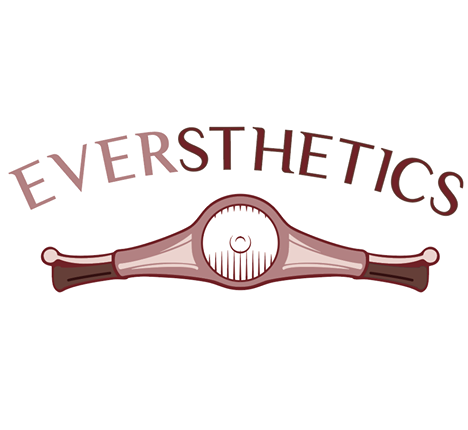Being at the Mediterranean Congress of Aesthetics with exceptional professionals, is not something that happens every day. That inspired me to present my paper about “Everyday Aesthetics; Kazantzakis’ Japan“.

That work combines the classical and contemporary philosophy about Aesthetics, but also presents how a famous Greek inspirational man, author Nikos Kazantzakis, perceives the aesthetics of a different culture, such as the Japanese culture. So let’s see about Everyday Aesthetics, or the ‘Democratization of the Beauty’ as I like to call it.

The paper I have submitted to the Symposium deals with everyday aesthetics theory; it is mainly based on a contemporary research by Japanese philosopher Yuriko Saito. A range of examples provided in the book ‘Traveling to Japan – China’, written by Nikos Kazantzakis, support this theory. It is noteworthy that Japanese culture focuses on and honors not only fine objects / environments, but also fine behaviors. So, through Kazantzakis’ view, we can see the aesthetic aspects of Japanese gardens, the ceremony of tea preparation, the traditional Japanese dressing, their sports, their behavior, etc.
In general, we use the term Aesthetics to describe an experience, an emotion, a taste, a way of life, art, philosophy, etc.; this long list shows that aesthetics is related to a wide range of subjects. Classical philosophers, are concerned about Aesthetics, as a branch of Philosophy, which deals with the nature of art, beauty and taste; those theories seem to still apply to modern relevant theories. We know there is a close relation between aesthetics and art, which is the basis of Western view of aesthetics; for instance we admire the aesthetic elements of a painting of Rembrandt or Beethoven’s music. But what about the aesthetics elements of objects and experiences that don’t relate to works of art?
Everyday Aesthetics
Kant justifies the feeling of pleasure in front of a beautiful object and that creates an long discussion; is aesthetics related to subjects that are not works of art; for instance, the enjoyment of the seasight or the sound of a song in our everyday life? Nikos Kazantzakis, supports the same thing when he writes after his travel to Japan, in 1935.
Apart from painting, literature, music or theatre, the Japanese aesthetic tradition presents an aesthetic sensibility that exists in everyday objects and activities, such as; the flower arrangement, the tea ceremony, cooking, or the seasons feasting. All these elements incorporate Japan’s aesthetic sensibility, which in turn cultivates people’s aesthetic sensitivity and appreciation of the world. Thus, the Japanese aesthetic tradition presented in Kazantzakis’ book provides an ideal frame for us to examine Everyday Aesthetics! In fact, Japanese aesthetic tradition inspired many philosophers, such as Yuriko Saito, who was born in Saporo, Japan, and issued a book about Everyday Aesthetics in 2007, which is the first philosophical book about that subject; thus it opens a new era in Aesthetics.

Basic Characteristics of Everyday Aesthetics
Let’s proceed to specific properties of everyday aesthetics; some of these could be the order, cleanliness, taste, rightness or the new.
Although these characteristics are deeply rooted in our daily lives and govern our activities, we rarely relate them to aesthetics; this is because we consider them as humble, inferior, or taken care only by housewives. But many of our first aesthetic experiences are related to those qualities; as children we were taught to be neat, clean and polite. Additionally, all of us are constantly involved in a cleaning process. Therefore, everyday aesthetic qualities seem to be of universal aesthetic interest!

Cleanliness
For example, cleanliness is related to everyday aesthetics; we are not only interested in being clean but also looking clean, smelling clean and feel clean. Cleanliness often is a feature we enjoy. Even in home staging, one of the golden tips is to clean the rooms. As we see below, Kazantzakis seems to admire cleanliness;

Right, the one that fits in
Also, when something fits in, it’s right, then it’s nice to see it, we like it and this has to do with aesthetics. As rational beings, we like to match things and this is aesthetically interesting. We say ‘that’s right’, ‘it seems to fit’ in architectural or decoration issues, For instance, ‘ The furniture at the living room doesn’t look right to me’ can be an aesthetic issue. The right is a baseline in aesthetics and is associated with complex properties, such as; “symmetrical”, “balanced”, “integrated”, “or “harmonious “. Kazantzakis below makes a note about Japanese gardens;

Examples of Everyday Aesthetics
In the sessions below, we see some examples that describe major issues in our everyday life, such as fashion, exercising, gardening, decoration, and food. This shows the extent of aesthetics in our everyday life.

Style and fashion
Style is about the aesthetic message we want to communicate; this implies a conscious exploitation of social rules. For instance, a scarf on the neck or a particular hat, provide an experience to the observers; others see a certain meaning in that particular detail, because they feel there is a background in this gesture. Through style we understand what is emphasized, what is placed in the background and what is associated with it. Therefore, style is one of the characteristics of the everyday aesthetic estimation.

Home, decoration
Also home affects how we live and how we feel in our daily lives. Many of our daily aesthetic experiences take place at home: enjoyment of the place, cooking, cleaning, being with our beloved people. In detail, how much aesthetic stimuli we get when cooking – even the house itself has its own scent! Home is a gathering place, a repository of love, laughter and tranquility. Home is where our stories are written and it has the potential to enhance our everyday experiences. All these enhance a comforting stability in our lives that promotes the feeling of security!

The Importance of Everyday Aesthetics
It’s difficult to deny that everyday aesthetic concerns, preferences and judgments cannot be adequately incorporated by art. Some people may agree with that, but they can still question the importance of everyday aesthetics; they usually believe that it is a matter of rather trivial issues that do not deserve philosophical research.
In reality however, everyday aesthetic behaviors often lead to consequences that affect not only our daily lives, but also the state of society and the world! For example, in today’s consumer society, aesthetic considerations often influence our purchase decisions. Style becomes the decisive factor that determines the commercial success of a product, or a way of living in general. However, we are less familiar with the power of aesthetics that affects and sometimes determines the state of the world. One such example concerns the environmental impact of everyday aesthetics; where we like to go, or what we like in the nature.
In conclusion, let’s point out the importance of aesthetics in everyday life, using Kazantzakis’ phrase below;
Try to find the strict and direct beauty of the new reality in front of you. Make that need as a wish of yours, if you want to be free in this world of slavery!







1 Comment